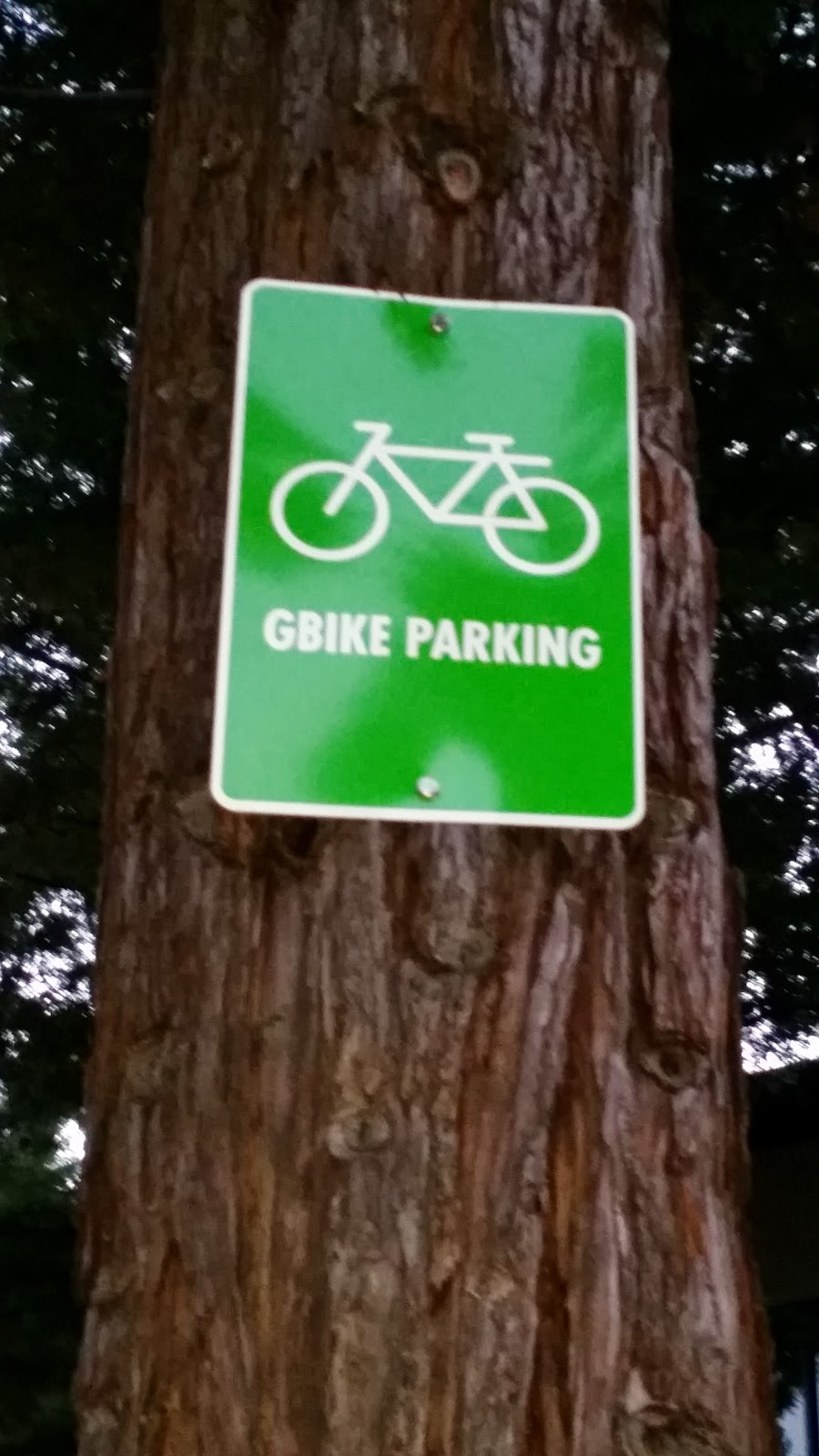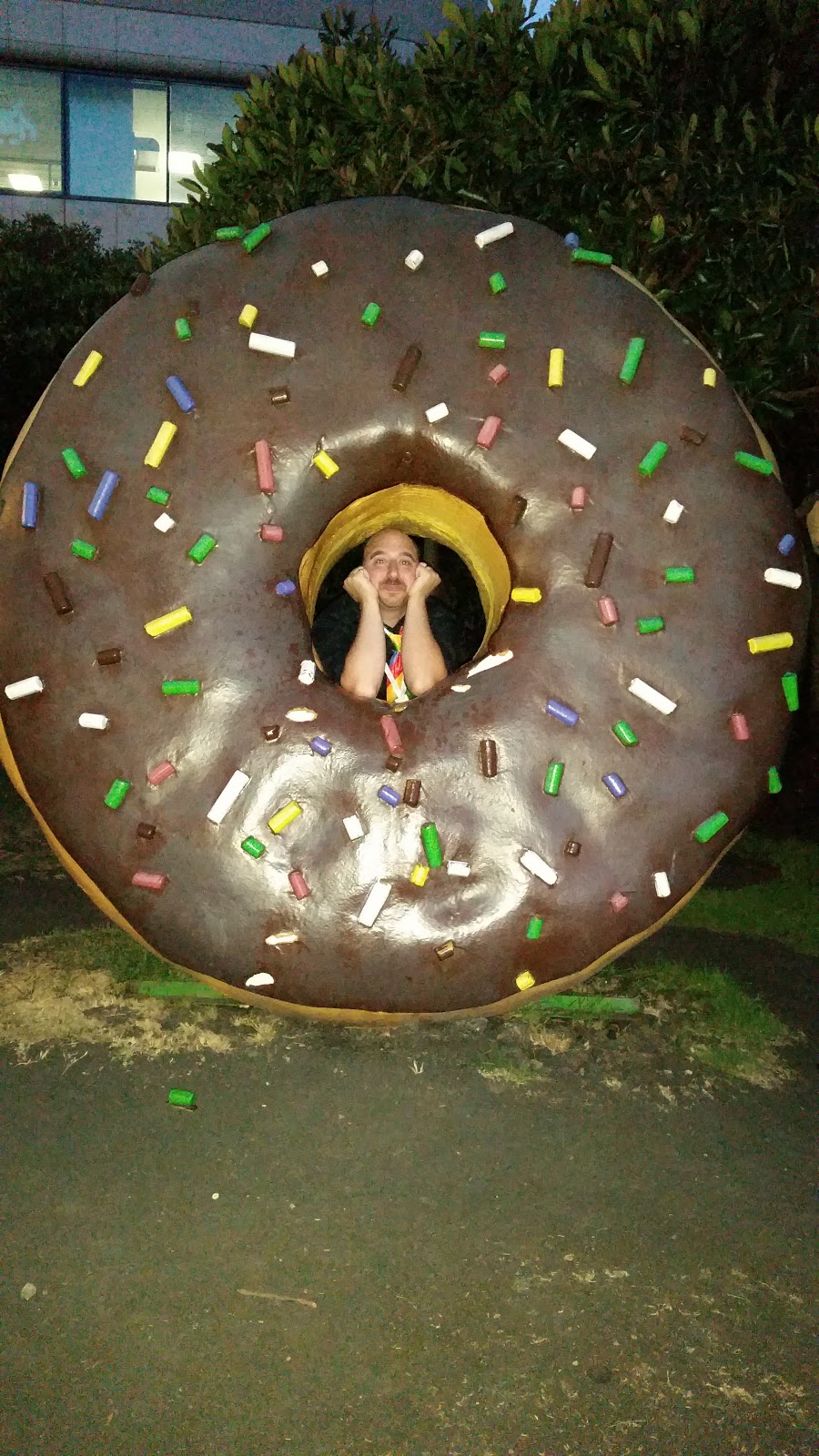Last week I had the unbelievable opportunity of attending the Google Teacher Academy at the Googleplex in Mountain View, CA. It took a week for me to fully process everything that happened into something that I could put into a simple blog post.
Let's start with the Googleplex:
Everything you have heard about Google is absolutely true. I couldn't take many pictures as most of the buildings are considering confidential areas and I signed a NDA, so below are what I could take. One of the coolest things were the micro-kitchens in each office area that was stocked with snack bars, cereal, water (flavored and unflavored), soda (holy crap was there a lot of soda), fruit, coffee makers, and chips. What I loved most was there were almost no name-brand products anywhere. Soda machines said "Cola" and all of the snacks were focused on organic or natural ingredient companies. There wasn't a Lays or Herrs to be found. Red Bull was there, but that's probably because the all natural energy drinks are terrible. All of this was completely free and we were encouraged to snack as much as we wanted to keep our energy up.
 |
| Me on a Google Bike |
|
 |
| where you park your Google bike |
|
 |
| the Google car |
|
 |
| me in Jelly Donut |
|
 |
| statues of all the Android OS |
|
 |
| the Disney store for adult nerds |
|
 |
| one of the Alien creatures from Alien |
|
 |
| I don't know why there is a dinosaur skeleton |
|
 |
| This was a random guacamole and salsa table setup under some trees. There was also fresh made strawberry lemonade. This was setup for anyone who wanted it. Just one of the many little touches Google supplies its employees and guests. |
The second thing was the way Google treated its employees. There were exercise areas, volleyball courts, pool tables, and community gardens so employees could enjoy their outdoor environment whenever they wanted. They were encouraged to go outside to have meetings or just simply to get away from their desk for a little while. Employees have no sick days. If you are too sick to come to work, stay home. If you do decide to come to work, there are doctors on campus to take care of you just in case. But the coolest story
came from one of our lead learners who told us that one day when she came to work very sick and none of the doctors were available to see her, a Google employee drove her to an emergent-care in San Francisco (over 30 min away and close to her apartment).
The GTA:
The best part about the GTA is
gathering educators, who are considered the crazy ones in their district, into one room and letting them loose on redesigning their classrooms. It was invigorating and inspiring and overwhelming and so many other positive words that I don't feel like looking up in a thesaurus. There were only a handful of attendees that I had met in person prior to the GTA, but it felt like we were long lost friends. I had basically strangers driving me from the airport, taking me along for dinner, and dropping me off in random places in San Francisco. And none of it felt awkward. We are now a weird, Google nerd family and it feels fantastic.
There were 5 sessions run by our lead learners spread over the 2 days. They were hands-on exercises that not only showed us creative ways to use Google tools, but gave us concrete examples of activities that we can take back to our classrooms immediately. My favorite ones were the scavenger hunt activity we did using our Nexus 7 tablets and
NFC tags/QR code and using hyperdocs.
In the scavenger hunt, we were given a link to a Google map with the exact location of each of our targets. We needed to walk around with the map open to guide us to the location. When we arrived, we found a tag that linked us to a quote. We then needed to take a picture with our tablet that creatively addressed the quote and share it to a Google+ community created for this event. What I loved about this was that it wasn't about simply finding an answer and then moving on. We really needed to think differently about our environment, the features of the camera app, and finding a picture we were willing to share to a community of learners who were going to judge our submissions. Some of the locations included piles of chalk and play-doh, chairs and rocks, or just hidden near a tree. The best part was the submission to a digital community. I found I was much more critical of my work and put more effort into using the features in the app before just posting a picture because I wanted to impress my peers who would be deciding on the best submission later.
HyperDocs are basically a Google Doc that has links to videos, forms, slides and other Google docs embedded in them. I see them as a great way to transition from traditional note taking to something more interactive. It doesn't require the teacher to recreate everything he/she is doing, but simply put it into a different form. HyperDocs allow the motivated student to move faster than the rest of the class, for the teacher to collect reflections on the assignment, and for the entire class to gather information on a topic throughout the unit into one location. This is great for students who are absent, who are falling behind or for those who are having trouble organizing their work.
HyperDocs might also be an alternative instructional method for flipped classrooms. Rather than using the videos to drive instruction, the major information can be written into the Google Doc with the videos linked as additional resources. There can also be short quizzes or reflection forms included to check for understanding.
Nearly every activity we did was on a timer. It was frustrating, and nerve-racking, and totally awesome. When we give students projects, we give them lengthy timelines so that they can accommodate other class' projects. But students just start shoving as much information as they could fit and teachers start putting rules in place to limit how much they can do. Instead, we can give them 10 minutes in class,
very specific guidelines for the information they need to include, and 1 Google slide to do it in. Time is spent not on perfection, but on focusing on the most important information and creatively presenting it. It takes me 10 minutes just to explain what I want from the project. I am actually thinking about using this in the first days of school for the students to introduce themselves to both me and their classmates. I am going to create a title slide explaining what they need to do, make every student create a slide in the same document, and then give them only 10 minutes to work. At the end, it doesn't matter what they have, they are done because I am going to change the sharing settings so they can't tweak it after class is over (which is what the perfectionists will want to do).
While there is always a "sit and get" portion to every PD, the practical application time was the most valuable. We were not being instructed on how to use a particular tool or what the different options were, but rather we were simply thrust into a situation and told to figure it out. That is what we need more of in schools, less hand-holding and more go figure it out situations. There were several times we were required to use a tool I had zero experience with. I immediately looked for someone who knew what to do and got a 30 second explanation before jumping in. Kids today know how to figure things out. My 7 year old had never typed before, but within 30 minutes of using Typing Club he figured out how to cheat the system and get himself higher scores. He is not a genius, just an example of how quickly kids are to play and learn.
Looking back, two days was not nearly enough time to learn as much as I wanted, but I don't think my brain could have handled any more. I have so many ideas swimming in my head that it is difficult to figure out where to even begin. I could go on and on about so much more, but I guess I should close with a succinct list of my takeaways:

- We need to stop wasting time in the classroom with procedures and get out of the way of the students as they are demonstrating their learning, in whatever manner they deem fit to demonstrate it.
- Today's world is about adapting our SKILLS to novel situations and being able to work in any work environment.
- The world is our learning space. We need to get out of those four walls and start using it more.
- There are educators all over the world who are crazy awesome and we need to connect ourselves to them wherever/whenever we can.
- Using Google tools is so much more than going paperless or using free tools. They are about creating a new environment for learning and instruction to happen.
When I applied to the Google Teacher Academy, I never thought I stood a chance of getting in. This has been an unbelievable experience from start to finish and I encourage everyone to take the leap and apply. Even if you don't get in, you learn so much about yourself and your teaching you end up growing as an educator.







































